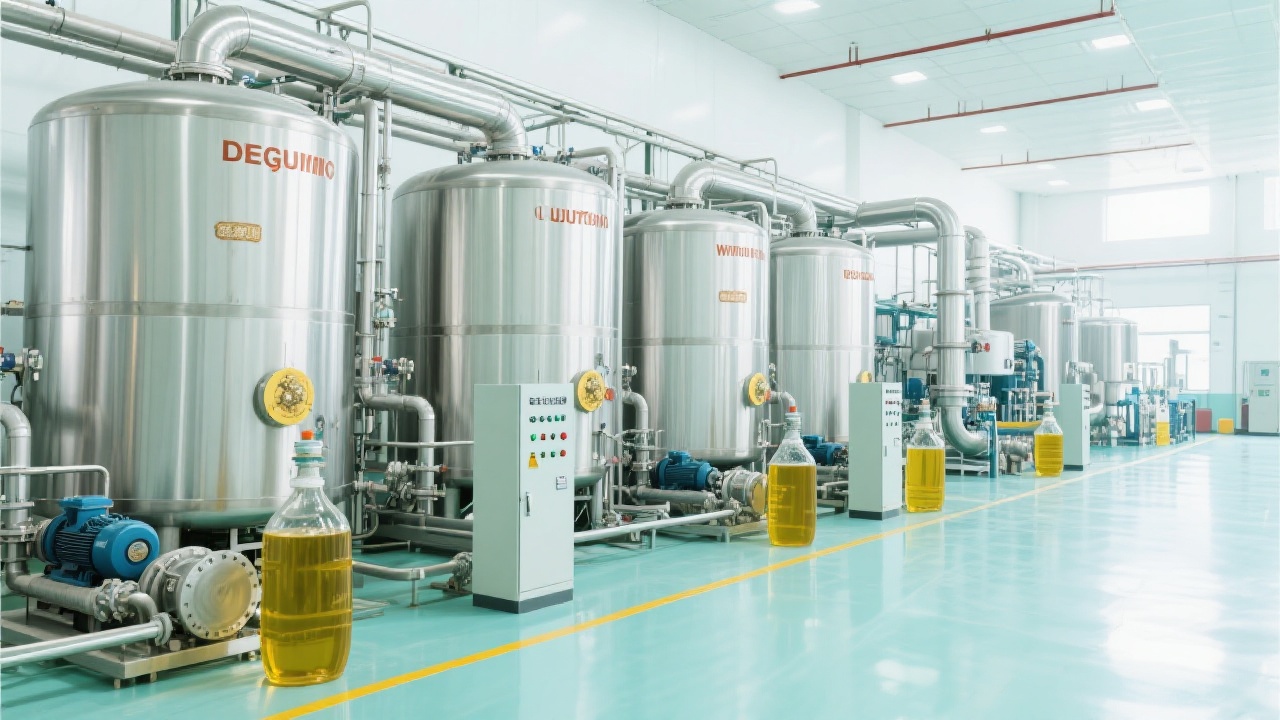Efficient Soybean Oil Refining Equipment: Innovations for Quality Enhancement and Energy Savings
2025-08-24
Product description
This article provides a comprehensive overview of key refining technologies and equipment selection strategies that enhance soybean oil quality while reducing energy consumption. It details the core processes—degumming, neutralization, bleaching, deodorization, and winterization—with clear explanations of technical principles, influencing factors, and equipment performance. Practical case studies illustrate operational best practices and maintenance tips across small, medium, and large-scale production facilities. Customized equipment recommendations and energy-efficient solutions are offered to optimize cost-effectiveness and output. Visual tools such as process flowcharts, parameter comparison tables, and operation checklists improve clarity and usability. Supported by industry standards and expert insights, this guide is essential for refining plant managers and procurement decision-makers seeking to upgrade their processes and boost competitiveness through modern, efficient technology.

Upgrade Your Soybean Oil Refining Process with Smart, Energy-Efficient Equipment
For soybean oil producers aiming to improve product quality while reducing energy consumption, modern refining equipment is no longer optional—it's essential. This article breaks down the full refining workflow—from de-gumming to winterization—and shows how smart design and precise control can boost yield, purity, and sustainability across small, medium, and large-scale operations.
Core Refining Steps & Their Technical Impact
The journey from crude soybean oil to high-grade edible oil involves five key stages:
- De-gumming: Removes phospholipids using water or citric acid. A well-controlled step reduces sludge by up to 30%, minimizing waste and improving clarity.
- Neutralization: Eliminates free fatty acids (FFA) with caustic soda. Optimal pH control (around 4.8–5.2) prevents over-saponification—saving 5–8% of oil loss per batch.
- Bleaching: Uses activated clay to remove pigments and residual metals. Proper temperature (100–110°C) ensures consistent color without oxidation risk.
- Deodorization: The most energy-intensive phase. Modern vacuum systems with heat recovery can cut steam usage by 25–35% compared to older models.
- Winterization: Critical for cold-climate markets. By removing high-melting-point triglycerides, this step prevents cloudiness in oils stored below 10°C—boosting shelf life and customer satisfaction.
| Process |
Energy Use (kWh/ton) |
Key Efficiency Tip |
| De-gumming |
~30 kWh |
Use counter-current washing for water reuse |
| Neutralization |
~60 kWh |
Automated pH monitoring cuts chemical waste |
| Deodorization |
~180 kWh |
Install heat exchangers for steam recovery |
Tailored Solutions for Different Plant Sizes
Small processors (<5 tons/day): Focus on modular units like compact deodorizers with digital controls. These reduce labor needs by 40% and lower maintenance costs significantly.
Medium plants (5–50 tons/day): Invest in semi-automatic systems with integrated PLCs. One case study from Brazil showed a 22% drop in monthly electricity bills after upgrading to a closed-loop cooling system.
Large facilities (>50 tons/day): Consider fully automated lines with real-time analytics. Industry experts at AOCS (American Oil Chemists' Society) recommend predictive maintenance tools that reduce downtime by up to 30% annually.
Why Upgrade Now?
As global buyers demand cleaner labels and lower carbon footprints, outdated refining setups are becoming liabilities—not assets. In fact, companies that adopted energy-efficient refineries in 2023 reported an average 17% increase in export orders from EU and Middle Eastern markets due to improved compliance with food safety standards.
Whether you're optimizing your current setup or planning a new facility, investing in precision-engineered equipment pays off fast—in both oil quality and operational efficiency.
Ready to transform your soybean oil production? Let’s discuss how our latest refining solutions can help you achieve premium results with less energy.
Get a Free Process Audit & Custom Equipment Proposal Today



